People
She Lived a Secret Life for Decades. Now, the Entrancing Psychedelic Art of Kali Is Finally Finding Its Audience
The extraordinary true story of a visionary artist.
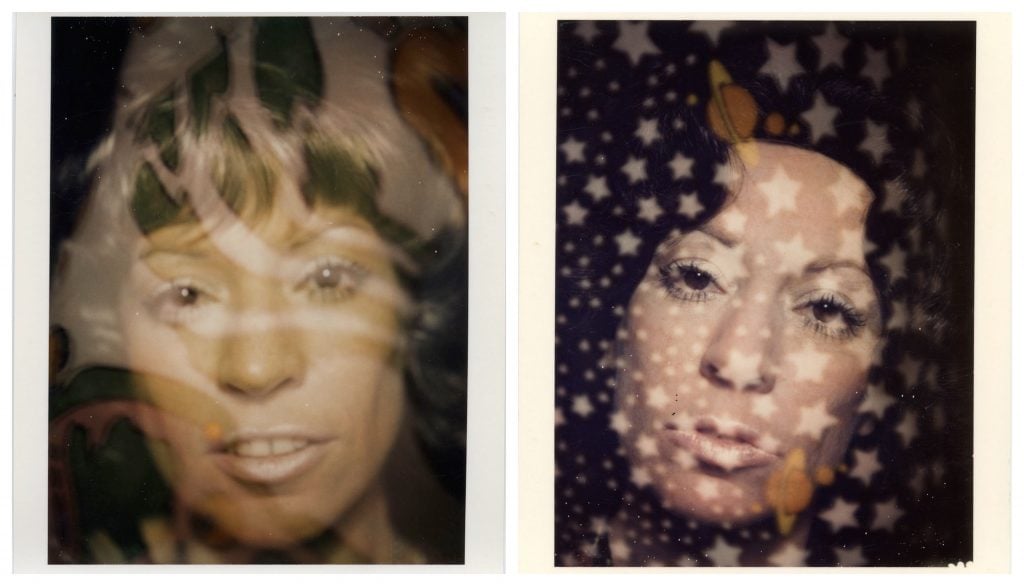
The extraordinary true story of a visionary artist.

William Van Meter

When she was a child in the mid ‘60s, Susan Archibald lived with her grandmother in Long Island. Visits to her mother in Palm Springs were always memorable. On some nights her mom would wake her and her brother up and they’d pile into her 62’ Studebaker, a tank of a car, and drive into the desert expanse to look for UFOs. “My mom would say, do you see that?” Susan recalls. “She’d see a light in the sky and then it would be gone. She’d call the airport and the FBI, but they really didn’t wanna hear from her. She’d fanatically draw these images over and over again.”
On other nights, her mother would perform what seemed to be a strange ritual in the pool. “It meant I wasn’t gonna go swimming,” Susan says dryly. “My mom would go into the shallow end. She’d drain the pool down and pour in different chemicals and dyes.” Her mother would develop her photographic prints like this, alternating between elation and laser-focused concentration, swirling them in what almost seemed to be a dance. They’d drift and float like ghostly lily pads in the water.
Such memories give a glimpse into the universe of Joan Archibald, known as Kali. Completely under the radar in her lifetime (Kali died in 2019), she is now being recognized for her ecstatic, experimental photography. Her style is unmistakable. No Kali work was complete without vivid colorization. She was known to combine as many as eight negatives to make a print, overlapping and layering images. Other times, she’d use spray paint or toss on sand. In some pieces, mosquitos were trapped on the messy surface like flypaper, becoming part of the piece.
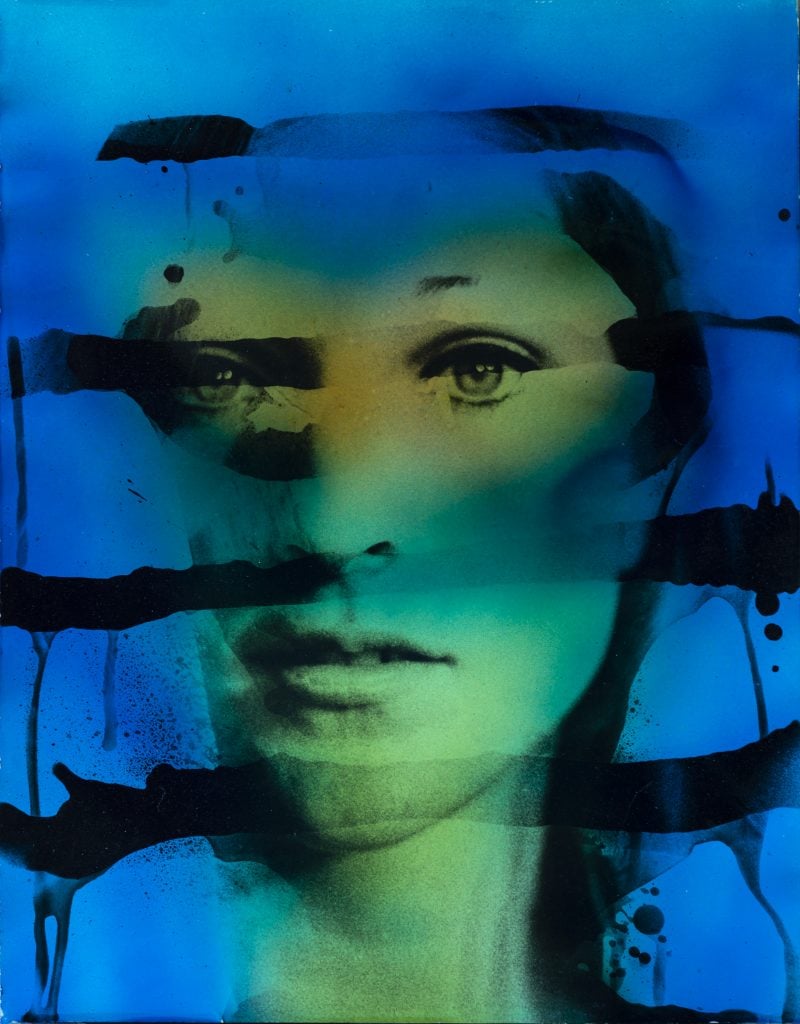
Kali, Face (Blue and Green), Palm Springs, CA (1968). Courtesy of Staley-Wise Gallery.
Whether capturing landscapes, UFOs, or neighborhood children, her subjects were vividly transformed into pop psychedelia through such painstaking techniques. But perhaps the true signature of Kali’s wide-ranging body of work is its aura of impenetrable, inscrutable mystery—a sense that correlates to her own deep privacy that was veritably a secret life.
“I was sworn to secrecy,” says Susan, who never uttered a word—even to her husband—about her mother’s prolific 40-year clandestine art practice during her lifetime.
The first major burst of contemporary interest came via last year’s limited-edition hardcover compendium Kali: Artographer (a knockout extended edition is being released next month) and a show at New York’s Staley-Wise gallery. The exhibition “L.A. Woman,” opened last month at the Columbus Museum of Art, and is on view through March 2023 before touring to other institutions. Even with over fifty pieces, that show represents just a fraction of the stockpile of Kali’s surviving work.
“A posthumous discovery of an artist is always exciting,” says the Columbus Museum’s executive director Nannette Maciejunes, who helped curate “L.A. Woman.” “But boy does it not capture the zeitgeist of the late sixties and seventies? It just takes you back to that moment.”
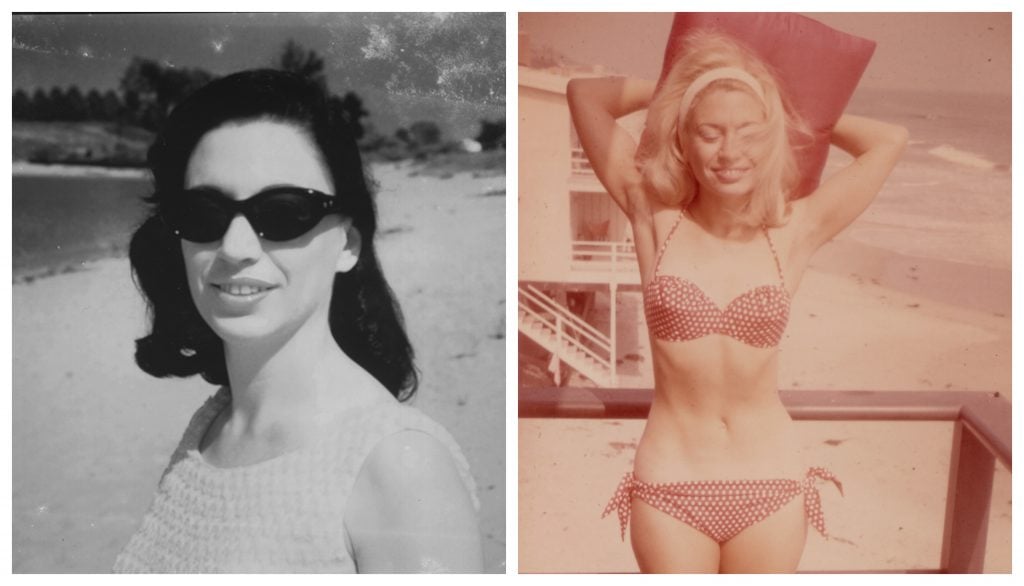
Joan Archibald drove from Long Island to California and reinvented herself as Kali. Courtesy of the artist’s estate.
In its broadest outlines, Kali’s story mirrors that of another now-famous photographer, Vivian Maier. The photographers share the narrative allure of an unsung genius diligently working behind the scenes, only to emerge a feminist triumph after death. But a wide chasm separates their respective oeuvres. Maier documented (often surreptitiously) the world around her while working as a nanny, making lyrical reportage with an artist’s eye. Kali had no interest reflecting the everyday. She was tapping into another dimension entirely, morphing reality to fit the vision of her mind’s eye.
A truncated version of the legend: She was born in 1932 in Islip, New York. Sometime around 1962, Joan Archibald (nee’ Yarusso) left her trumpeter husband, two kids, and former life behind in Long Island and drove to California. She went blonde, and after a stint hobnobbing with the Hollywood beach set in Malibu, settled in the former home of Sandra Dee and Bobby Darrin in Palm Springs. Joan excelled at a photography night course at the local community college. Around 1964, she created the artistic persona of “Kali.”
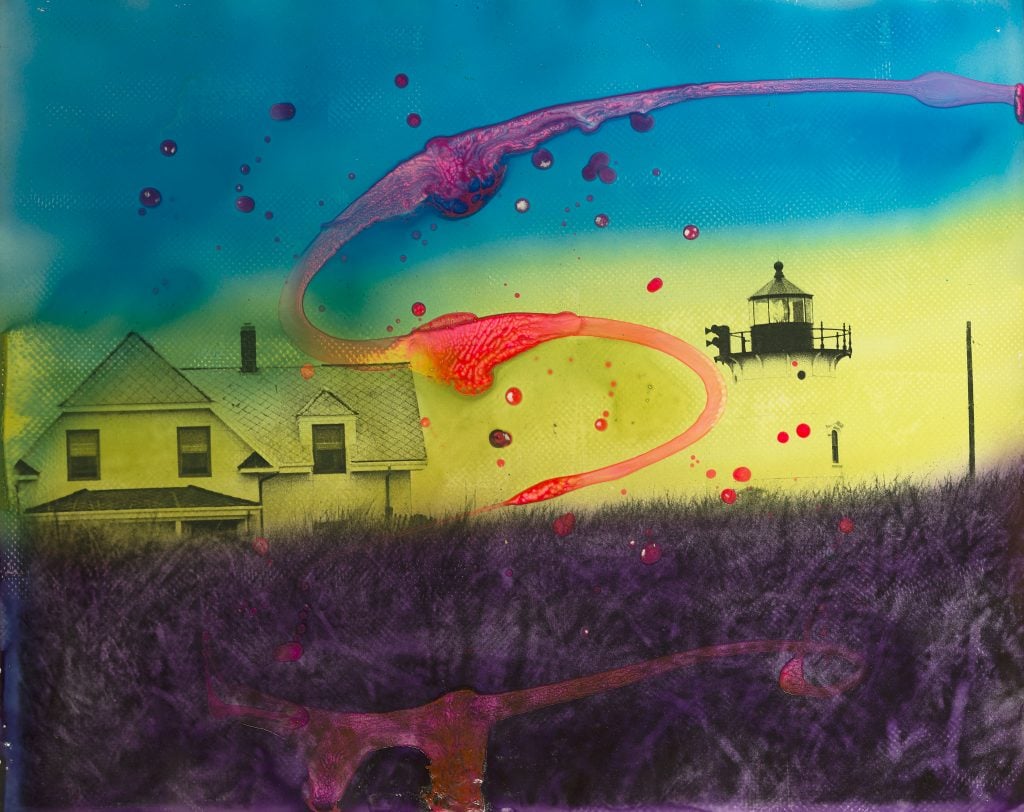
Kali, Maine Landscape Pink Swirl (1967). Courtesy of Staley-Wise Gallery.
She had relocated to Palm Springs in its golden age. The actor Richard Chamberlain was an acquaintance. Amid her trove of photos, one finds a picture of Chamberlain relaxed and smiling alongside Kali. Susan remembers Frank Sinatra letting them all into the lounge of the Chi Chi to shoot photos. She even says that the singer had been interested in dating her mother, though the sentiment was unrequited.
“Frank Sinatra, Dean Martin—all these people lived in our neighborhood,” Susan says. “My mom taught me at a very young age, ‘These people are artists, they’re actors. Do not approach them. Don’t stare at Steve McQueen.’ My mom was very private, so I became very private.”
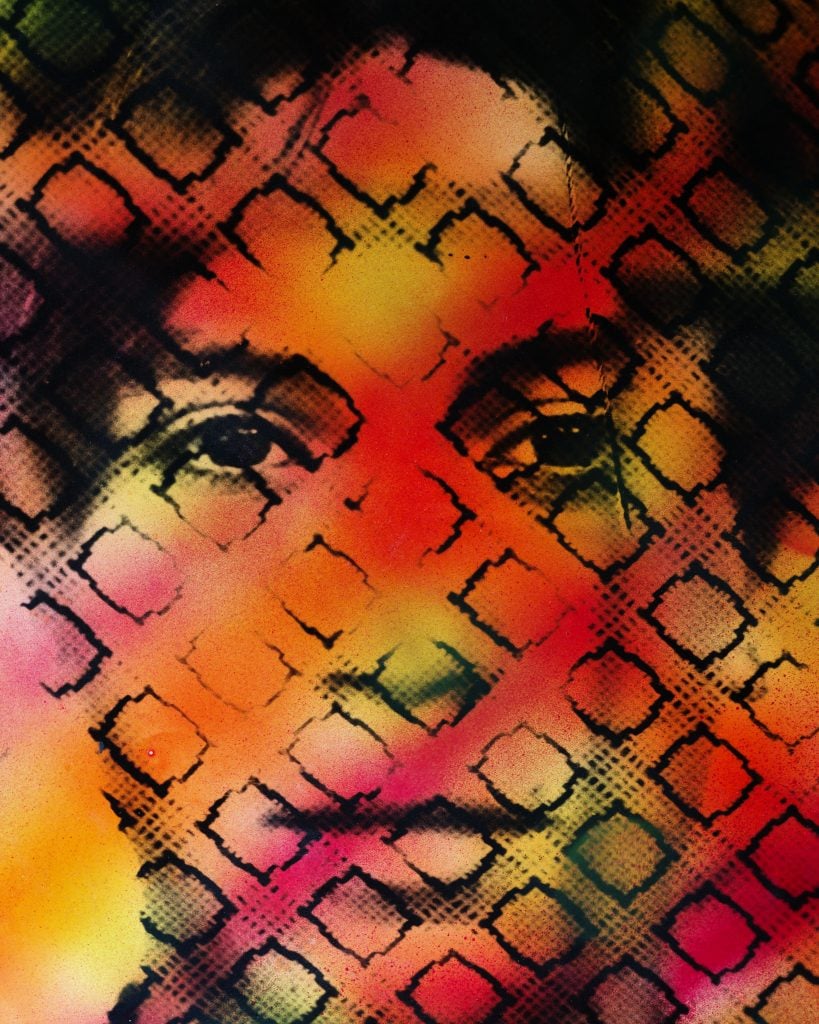
Kali’s portrait of her daughter, Susan Archibald, “Symmetry Su” Palm Springs, CA. 1967. Courtesy of Staley-Wise Gallery.
Celebrity may not have impressed Kali, but the craft of acting may well have intrigued her, given that she had herself taken acting classes when she was younger. Throughout her photos, she explored role-play in various ways. Kali sourced models from beaches and parks, or discreetly from her social network—most often Susan and her friends. She frequently altered the appearance of her subjects, dressing them in different thrift store-sourced outfits and employing an arsenal of wigs. She then skewed their reality further through her inventive postproduction techniques.
A remarkable subset of Kali’s work is self-portraiture, seemingly exercises in exploring different personas via Polaroid. In many ways these works prefigure the set-up photography of Cindy Sherman’s “Untitled Film Stills,” a generation later. Hundreds of these images exist. “Kali,” it seems, was just one of Joan’s many guises, not merely a pseudonym but in a sense an alter ego with behaviors widely divergent from glamorous style maven Joan.
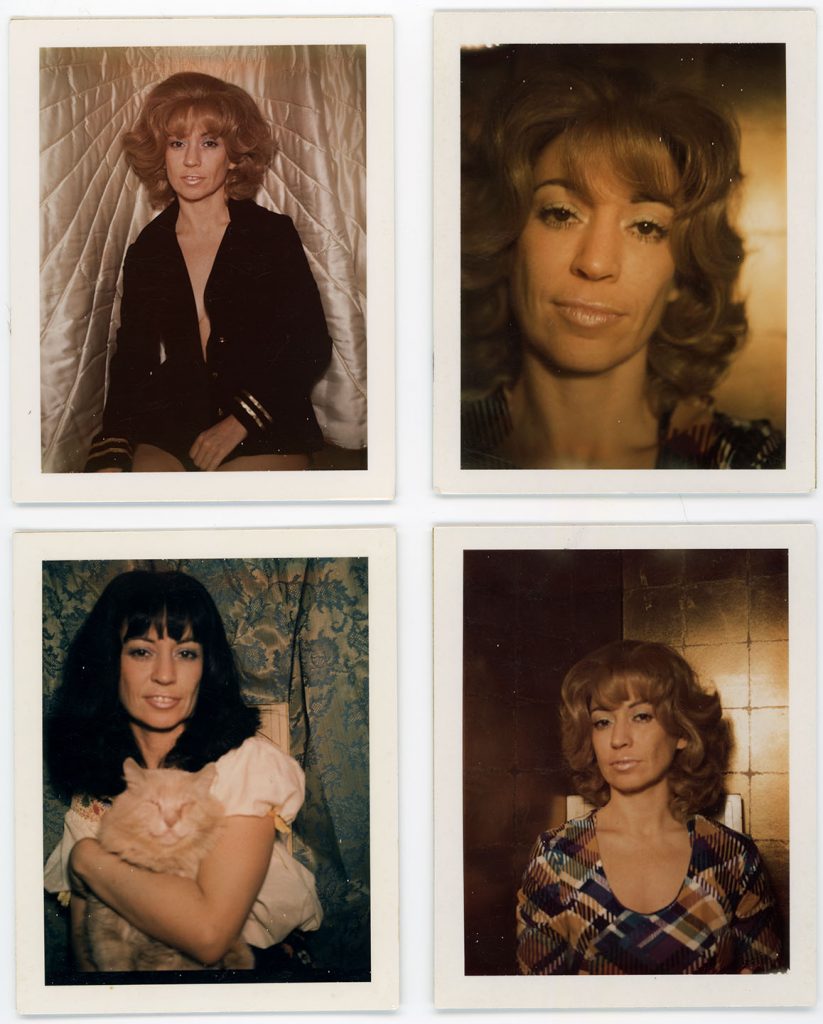
Previously unpublished self-portraits of the artist as many young women. Kali circa 1972. Courtesy of the artist’s estate.
Kali’s story is intertwined with the story of California, the sun and the shadows of westward ho manifest destiny, from its mid-century promise as a land of reinvention to bikini beach bops to Frank Sinatra at the Palms. Psychedelic mind expansion and desert paranoia. It’s all there, in Kali’s biography and art.
But her tale is also about genius, secrets, and family. The remarkable story of her art—and its rediscovery—intersects with two very different love stories.
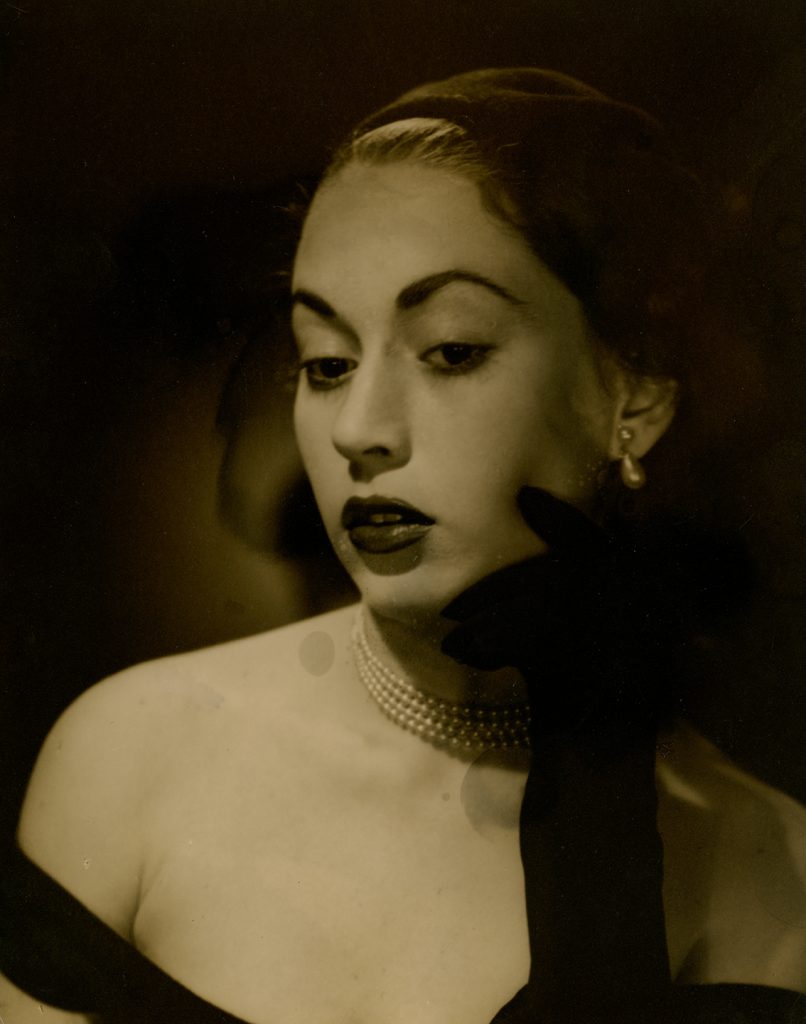
A teenage Joan Archibald photographed for New York Acting School in 1948. Courtesy of the artist’s estate.
Susan, the daughter, inherited something of her mother’s mystique. Len Prince first laid eyes on Susan Archibald at Great Neck South High School in Long Island, New York. “This girl walked down the hallway and she was like a rock star,” he remembers. “Thin, muscular, corkscrew hair. Totally independent. I had to meet her.”
The feeling wasn’t mutual—at least not at first sight. It took years, but Len won her over. Susan lived with her grandmother, Betty, who owned a dress shop and supported the family, including Susan’s mother out in California. “She was a classic, strong, loving Jewish, grandma,” Len says. “Betty made me feel like a son.” Len continues, “Susan and her brother were best friends. Everybody called him Archie. He had a wicked sense of humor. He was the favorite son. He was gorgeous and adored. They were the closest you could imagine. Sadly, he passed at a young age.” (Susan will not comment further and says that the subject is “off limits.”)
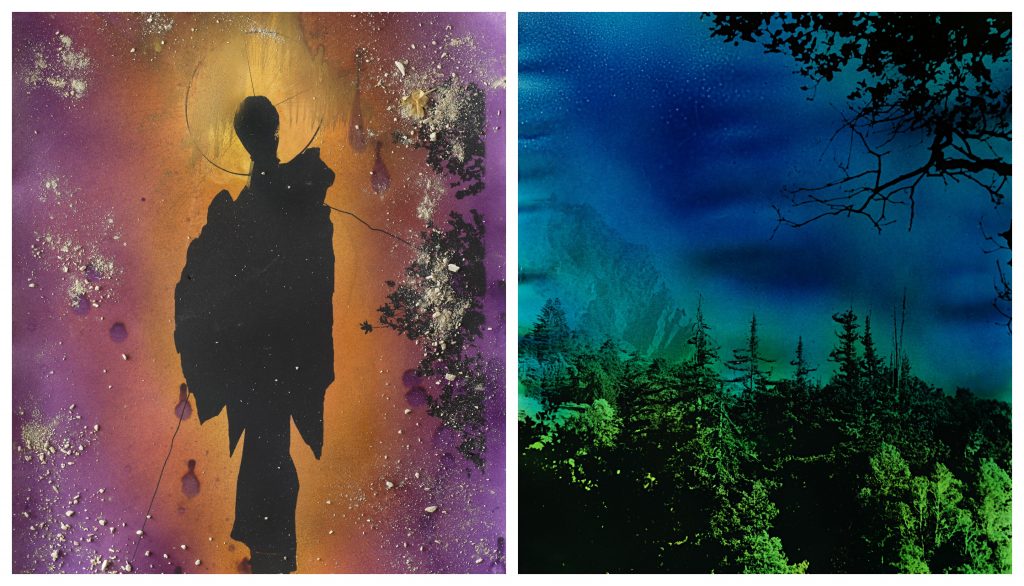
Kali, Nepenthe Dark Angel 1 with Kali’s ashes, Big Sur, CA (1967) and Tahoe Blue/Green, Palm Springs, CA (1967). Courtesy of Staley-Wise Gallery.
By the time Len married Susan in 1975, he was a well-regarded commercial photographer and creative director. Susan, meanwhile, started her own business hand-painting backdrops for photoshoots. His wife often spoke to her mother, whom Len knew as Joan, in California. “They were thick—a force to reckon with,” he says. “They were very protective of each other. Susan, her mother, and her grandmother were like one unit.”
In 1976, Joan had married her second husband, Karl Davis, a dashing attorney. He reminded Susan of Gregory Peck and towered over her 5’2” mom. They were deeply in love and Susan recalls that her mother had never been happier. The couple left Palm Springs for Pacific Palisades, an affluent coastal enclave two hours west and a world away from the desert. “My mom adored her husband,” Susan explains. “She would just let him talk, and my mom would be standing there. My mom was very private. She kept the Palm Springs house to keep her art and to go there and explore and take pictures.”
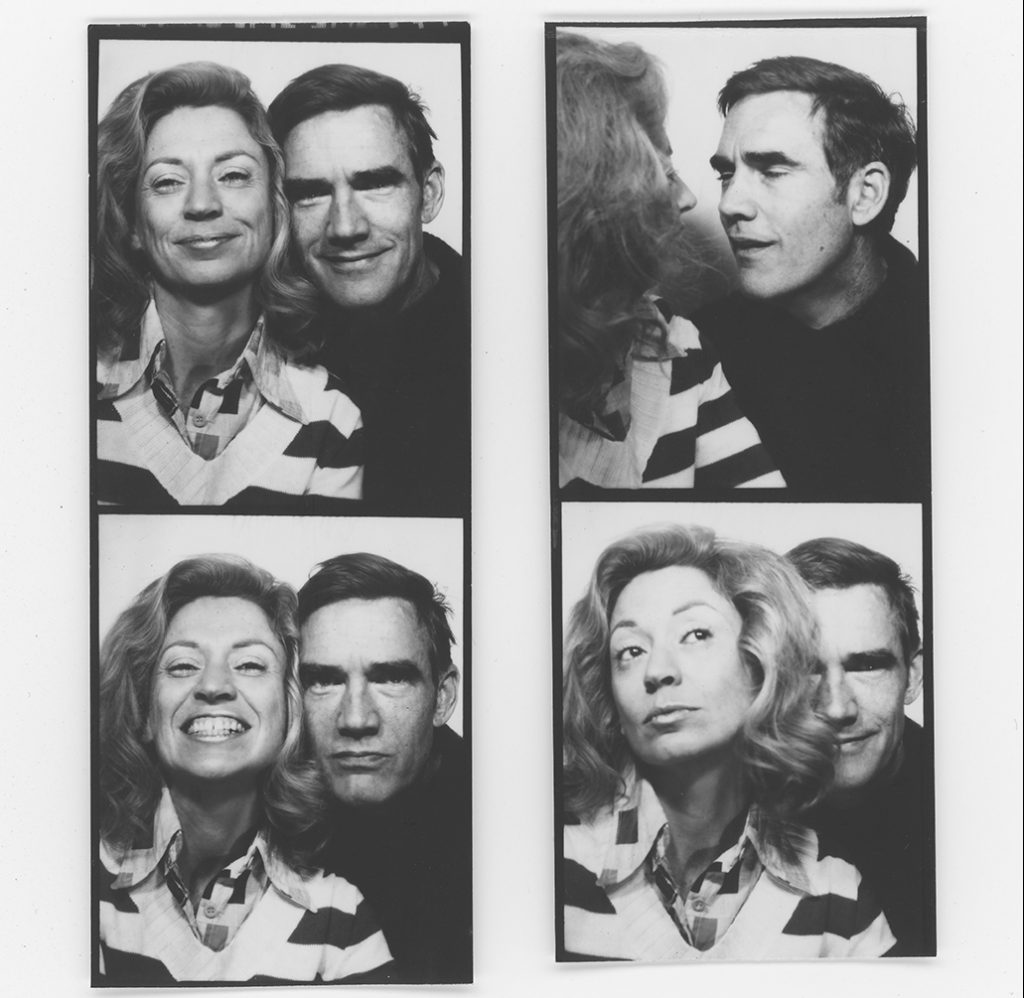
Kali and her second husband, Karl Davis. Courtesy of the artist’s estate.
Len saw Joan infrequently, but recalls being fascinated by a woman of astonishing presence. “She was the opposite of what you expected a mother-in-law to be,” he remembered. “It wasn’t like, ‘Oh, Len darling, we’re so proud of your success. Thank you for taking wonderful care of our daughter.’ She was on her own page. She was strict, formal, funny, and stylish. She was graceful—and I was scared to death of her. She was a powerhouse. It was like meeting Anna Wintour.”
Len continues, “She used to swim a hundred laps a day. She was in great shape. She was a knockout. I don’t mean that in a sexist way. She was astonishing—and that may be a reason for some of her distance.” Throughout this time, Joan never enquired about Len’s work as a photographer. Nor did she mention that back in Palm Springs, she had kept her house to continue her own art, the master bathroom converted into a darkroom.
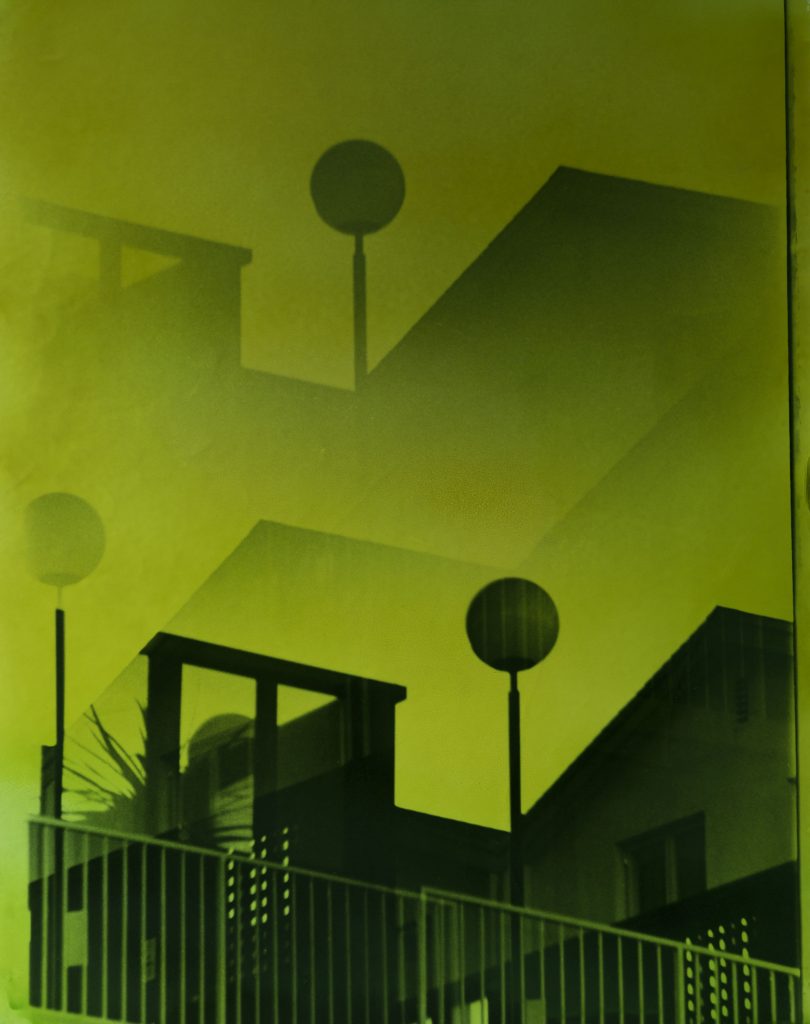
Kali, Globes Architecture Green, Palm Springs, CA. Courtesy of Staley-Wise Gallery.
Len and Susan would divorce in 1987. “I wanted kids. Susan didn’t,” he explains. “She was the love of my life.” They’d barely spoken since the split when Susan called him unexpectedly in 2018.
By then, a lot had changed for both parties. Susan had remarried and parlayed her business painting backdrops into a successful career painting mansion interiors with trompe l’oeil effects before pivoting to personal training. Len had had a midtown epiphany when a gust of wind blew a spiral of litter in front of his face, including a Macy’s catalogue he’d worked on. He segued into glamorous black-and-white celebrity portraiture and art photography. He’d also come out as gay.
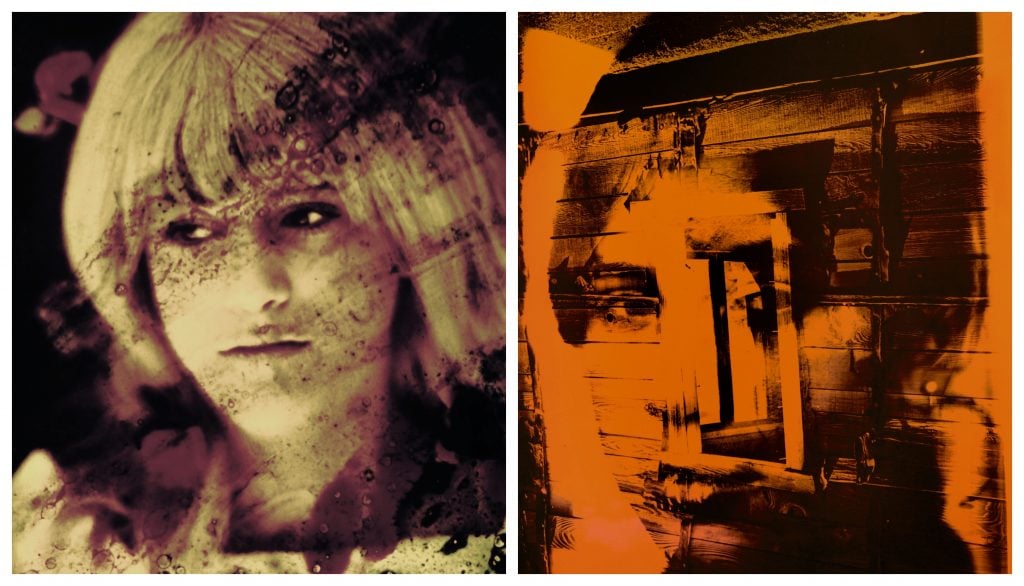
Two very different portraits of Susan: Su Blonde Wig Palm Springs, CA (1969) and Unlocked Eyes, Orange, Palm Springs, CA (1968). Courtesy of Staley-Wise Gallery.
“I’m trying to do something with my mom’s photography,” Susan told him over the phone.
She sounded different, overwhelmed. Her grandmother, Betty, had passed away, leaving Susan to settle her affairs, even as she also cared for her mother, now suffering from dementia. Susan herself had experienced a major stroke that had lasting effects. And in the midst of all this, out in Palm Springs, Kali’s house/studio had been broken into. There was extensive property damage—as well as destroyed art.
“You’re the only person I know that I could trust,” Susan told Len. “Would you look at a few prints and give me your opinion?”
Intrigued, Len agreed, not knowing what to expect. “That was the beginning of a rekindling of a great friendship,” he says. The fact that Susan had never told him about her mother’s secret life as Kali was a shock, though one that he quickly overcame. “I don’t look at it as deceitful,” he explains. “I look at it as honor. She kept Kali’s secret.”
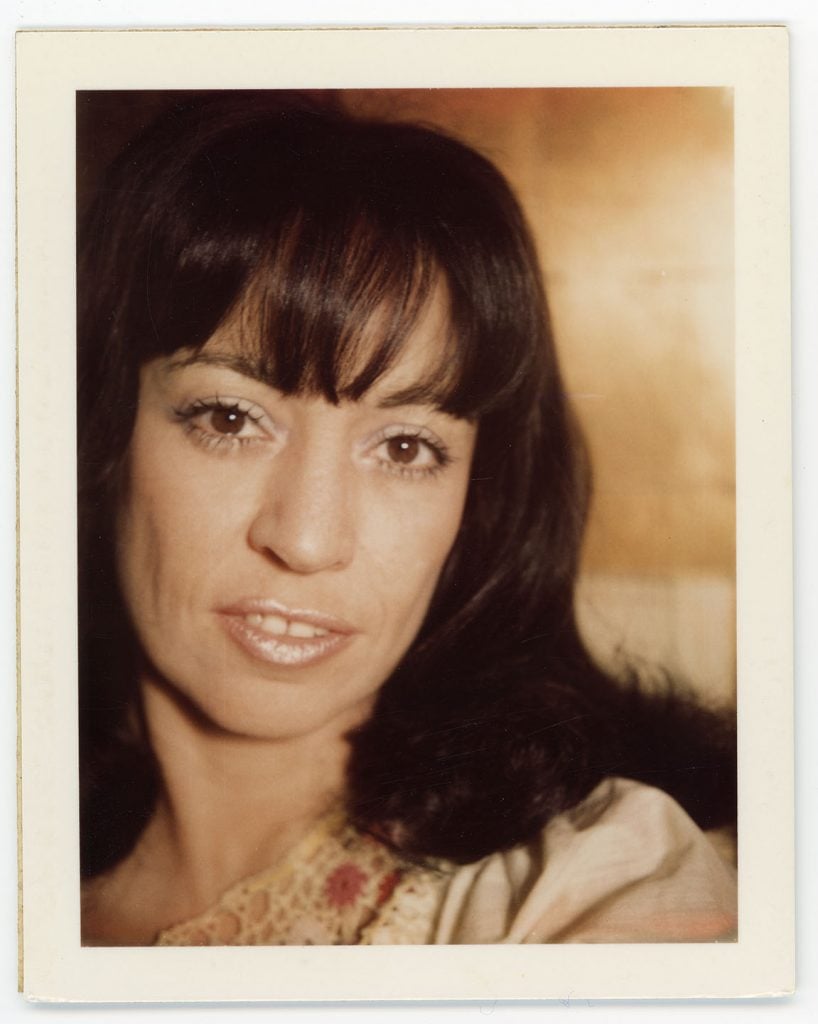
A self-portrait of Joan Archibald/ Kali. Courtesy of the artist’s estate.
Susan sent him a box of Kali works. He requested another. And another.
The trove of unseen art that began to emerge was so vast that Len had to move the furniture out of the den as he began to meticulously catalogue the unsorted heaps of photographs. Only gradually did the extent of Kali’s decades of experimentation become apparent. What also became clear is that her secretly cultivated artistic persona had been very much a passion project shared by all three women—daughter, mother, and grandmother.
“Susan was Kali’s muse, apprentice, and daughter—probably in that order,” Len says. Not only had Susan been her mother’s main model, she estimates that she spent nine years as her studio assistant, stamping prints with the words “No Reproduction Without Permission” and numbering slides. Betty, meanwhile, had attempted to act as her daughter’s agent and place her images with magazines and agencies (though to no avail).
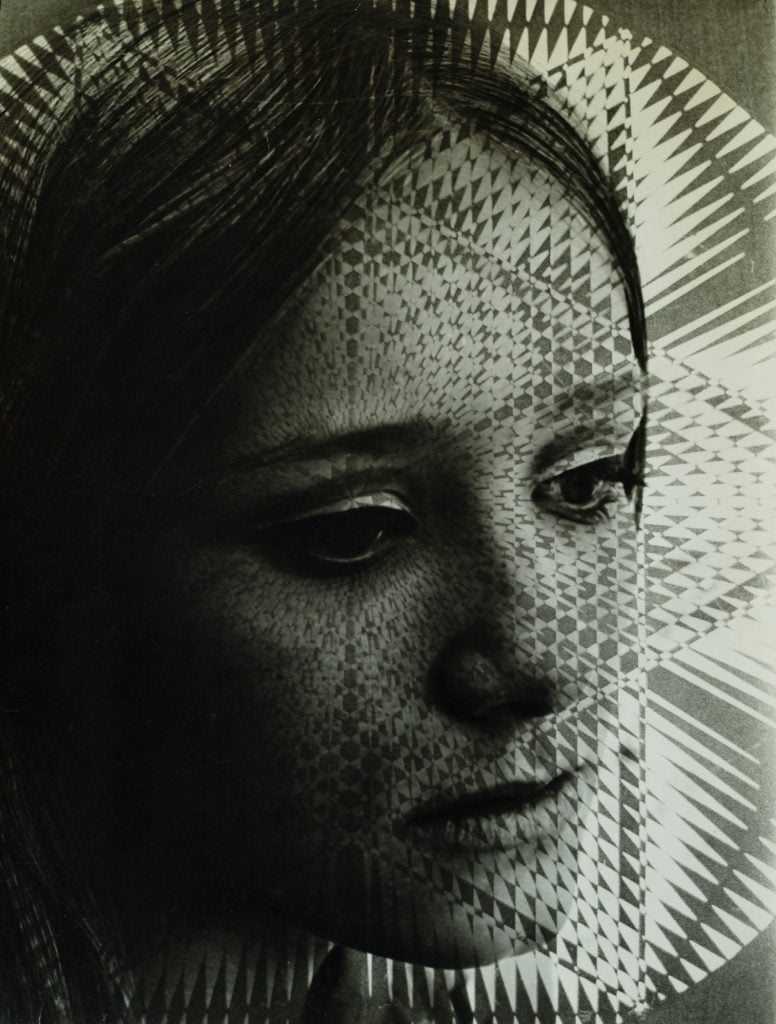
Kali, Henna Mask, Palm Springs, CA (1968). Courtesy of Staley-Wise Gallery.
Despite her intense privacy, there is little doubt that Kali was open to sharing her work with a broader audience—at one stage at least. She had a stylized “Kali” logo and letterhead and copyrighted the term “artography” for her signature array of techniques. An April 1973 letter to Edward Meyers, executive editor of Popular Photography, makes clear that she had a precise artistic vision that she hoped to communicate:
I am primarily interested in photography as an art form…though there does exist a certain fascination in stopping a split second in eternity… However complex the evolved techniques I am using, I strive for simplicity, but I am a perfectionist and will go to all lengths, and put forth all effort to accomplish a desired result. I enjoy fantasy in art and literature, and try to incorporate futurism, surrealism and mysticism in my work, as well as love themes, beauty in nature, and whatever else appeals to my inner senses at the time of creation.
A November 1970 piece on her work in the defunct magazine Camera 35 gave some recognition of her ambition. Otherwise, there is no published record of her work. It seems that her desire to present her art to larger audience subsided after meeting Karl in the early ’70s. And when Karl died in 2000, the already private Kali only became more reclusive, venturing out of her Pacific Palisades home only to feed the raccoons and pumas. “When you lose someone that you passionately love, it changes you,” Susan says. “You’re missing that person and you become more introverted and you go back inside. You don’t want to be bothered by people.”
For protection, she installed infrared cameras around the exterior of her home. These ended up becoming an obsession—and fueled her final great art series.
Her interest in UFOs returned now with a vengeance. She documented them with unrelenting fervor, photographing the monitors inside her home and making detailed notations in notebooks, jotting down timestamps and sketches, producing reams of documentation. In the blurry static screens she glimpsed otherworldly beings. Susan remembers her mother, who lived hours away, calling her to say, “You have got to get here and see this now!”
Kali died in January of 2019 at the age of 87 after struggling with Parkinson’s.
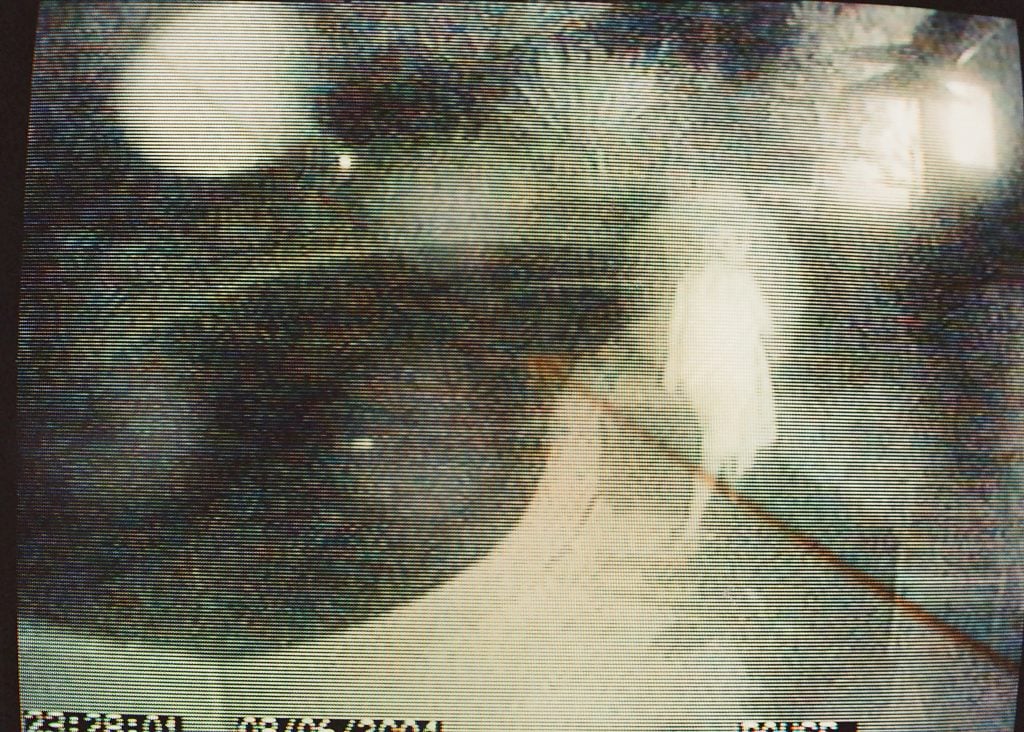
The final photo of the artist, a self-portrait swarmed by UFOs next to her pool. Kali Being Taken, Pacific Palisades, CA (2004). Courtesy of Staley-Wise Gallery
Len now has an entire room in his house devoted to the Kali archive and is curator of the Kali estate. He co-curated “L.A. Woman” with Nannette Maciejunes, and assembled the art book with writer Matt Tyrnauer and designers Sam Shahid and Matthew Kraus, who helped shape the project. Len is still going through boxes of Kali’s work and a wealth of home movies, including footage shot by her brother, Tony.
For her part, Susan is hoping that the touring museum show will find its way to Palm Springs, her mother’s spiritual home, where she created so much magic. “It was an act of love and trying to keep her legacy alive,” Susan says of the exhibition. “I think my mom would be in awe. After keeping the secret for so long, now it’s exposed in such a fabulous way worthy of her.”